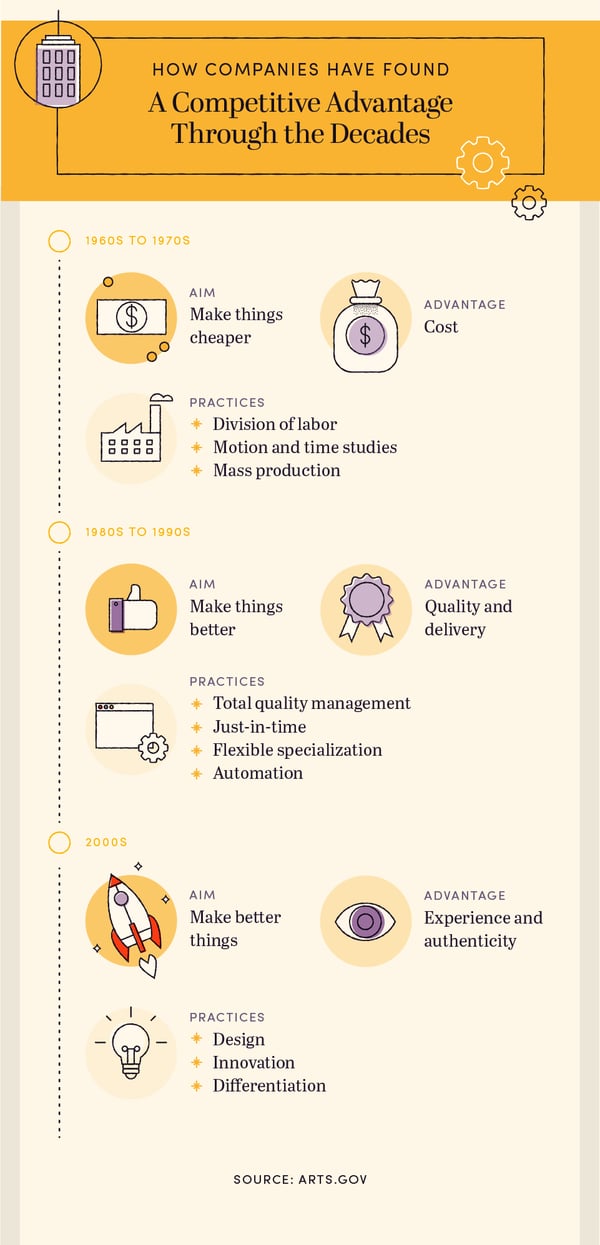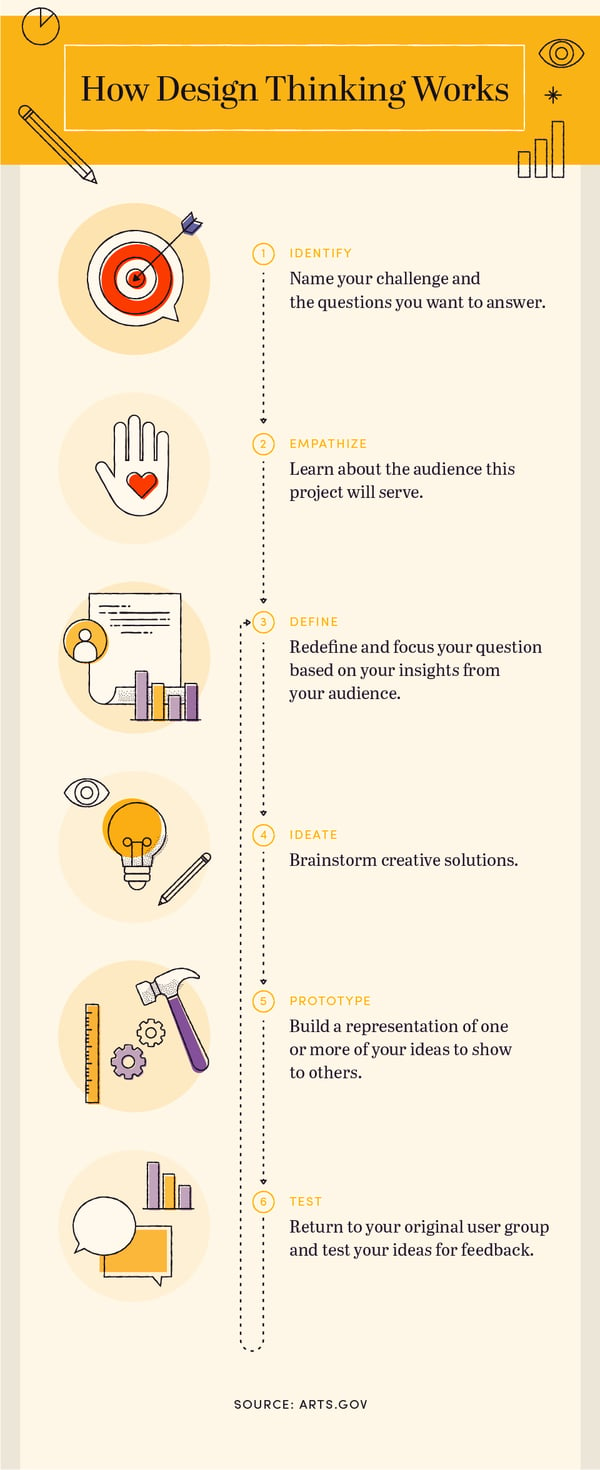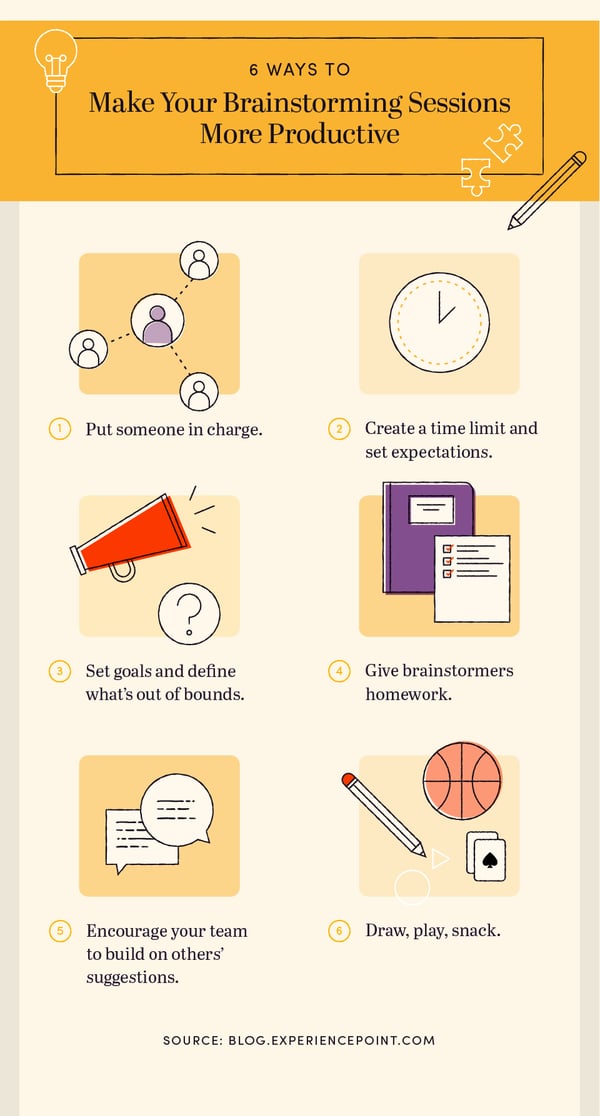How Design Thinking Helps Solve Complex Challenges
In today’s technology-driven world, one thing is certain: There’s no such thing as “business as usual.”
Prior to the internet, business strategy tended to follow a traditional, linear process that included analyzing data to identify challenges and solutions from the relative safety of the boardroom. Business managers studied dizzying printouts of P&Ls and market data. They sat around conference room tables talking about all the usual suspects they learned about in business school or from their years of experience. Maybe they held a focus group or deployed surveys. Then they let all that data point them toward the likeliest culprit and devoted resources to the most effective solution.
There are many companies that went belly up that way. Just ask Blockbuster, Kodak, and hundreds of dot coms you’ve never heard of.
But these traditional approaches are largely outmoded in the 21st century, where the only constants are change and complexity. Customers — be it B2C or B2B — are in control, and their wants and needs are ever-changing. Companies that don’t innovate or change to meet and exceed customer needs and expectations risk disruption or obsolescence.
These disruptions come in all shapes and sizes. They range from systemic issues like sustainability and inclusion initiatives to more specific challenges, such as products that don’t address the needs of customers. To truly solve problems in today’s business landscape, organizations must think in a new way; leaders and employees need different processes and approaches to strategy and innovation. The answers to complex problems don’t lie in spreadsheets or business modeling. After all, complex problems aren’t puzzles to be solved with more information, and with most, there is no linear path to a solution.

Make It a Personal Problem
In business, we tend to take a systematic, logic-based approach to solving problems. We choose from existing strategies and play the whole thing out in long PowerPoints and presentations. But there’s a modern methodology and mindset to transform how people think, reimagine, and solve the most complex business challenges and deliver value: design thinking.
Design thinking is an antidote to death by analysis. It is a process for creative problem solving that is focused on innovating and strategizing around the end user or customer. It incorporates analytical, synthetic, divergent, and convergent thinking to create a wide number of potential solutions that address unmet customer needs. Then it narrows these potential solutions down to find a “best fit” solution. With its focus on “what might be” and making, iterating, and real-world learning, the aim of design thinking is to unlock innovation.
A Beginner’s Guide to Design Thinking
“Human” is at the heart of design thinking. It moves past focusing just on the business need and asks, “What is the human need?” The design thinking approach focuses organizations on developing new solutions for end users or customers. There are three aspects that are critical to this process:
-
Empathy, which is intrinsically a human-centered approach
-
Ideation, which includes generating many ideas
-
Experimentation
Design thinking is like many other business processes in that it follows a specific process to reach a goal. Different schools of thought break it down into different stages, but on a high level, the design thinking approach identifies the challenge, brainstorms possible solutions, then experiments until it lands on the right one.

1. Identify the challenge, not the problem.
It’s tempting to conflate the challenge with the problem. If you’re looking for ways to increase employee productivity, for example, traditional business theory might say to give performance bonuses as motivation. You do your research, and sure enough, to remain a competitive employer, you could increase the amount your team is paid. You run the business models and calculate that a certain percent rise in incentive pay should calculate to a corresponding rise in productivity. Right there, you’ve gone from identifying the challenge — low productivity — to the problem — lack of financial incentive. But you’ve gathered your evidence in a silo and made your judgment based on an algorithm. No such solution could ever be truly effective for the long term.
Instead, outline all aspects of the obstacle without issuing preemptive judgment. Make careful observations of the big picture in which the issue resides. This is the time to gather all the data you can, from traditional sources like workflows and KPIs to in-person observation of any set processes. Most importantly, reach out to the community impacted by the challenge you’re addressing. Have substantive conversations, and make sure you aren’t making any assumptions about why they’re saying what they’re saying or what their possible motivations may be. In order to find a solution, you need to understand the environment in which the challenge resides.
We call this the discovery phase, and it’s critical to any venture where the outcome is uncertain. Maybe you have a fabulous idea for a new social media startup. You meet with designers and prototype a product. You network with potential investors and have some conversations with people who say it’s a good idea. At this point, all you’re working with is what you think you know, and that’s no foundation for a successful company. Until you embark upon customer discovery and get out into the world to have focused conversations with dozens of potential users or buyers, you don’t know if it’s a viable service or product.
2. Brainstorm across functions.
Now that you’ve gathered all your data and have a good idea of the factors that play into the challenge you’re trying to solve, it’s time to refine your hypothesis. This is the point where you begin to draw deductions from your research and define the parameters of the problem at hand. You can begin to see how the traditional, linear approach to problem solving has been upended in favor of a holistic view: Rather than assumptions based solely on data, you’ve started to develop a human-centric strategy that addresses the core issue.
Now, take the discovery phase a step further and invite the people you’re talking with to brainstorm with you. Who knows what kinds of ideas are rattling around inside their heads? Getting feedback from the community you hope to involve is critical to developing the best solution possible. Anything else is just educated guesswork.
Here is where you assemble your team and begin to toss around possible solutions. During this stage, one thing is critical: Don’t assume that any angle is wrong. Just as you kept an open mind during your discovery phase to identify the problem, clear your mind of any presuppositions about what it takes to solve it. It isn’t easy to do, but you don’t want to preemptively shut yourself off from any lines of thinking or potential solutions.

3. It’s time to experiment.
At this point, you’ve defined the problem and identified a solution worth trying. When implementing it, remember that you can’t do it in a silo. Like the butterfly effect, every decision you make in your business impacts something else. Systematically and programatically map out what the solution will look like in practice for everyone involved: your buyers, your partners, your employees. Build out a prototype or use case and test your theory in practice. Be prepared to be brutally honest in your assessment of its effectiveness and go back to the drawing board if necessary.
The hard part about this stage is accepting that after all the brainstorming, after you and your team have spent days tossing a dozen ideas around and whittling down your options to find that one best solution, the honest truth is that it might not work. It’s important to remember that design thinking is iterative. At any time, you may come into possession of new information that changes the game, and you have to be flexible enough to absorb it, internalize it, and go back through the ideation process to find a new best solution.
Design Thinking Helps Turn Challenges into Opportunities
Globalization and digitization have introduced layers of complexity to the world that we’ve never before experienced, and the old ways of doing business just don’t cut it in today’s global and digital landscape. Design thinking offers a human-centric, non-linear approach to problem solving that is, by nature, iterative. It focuses on people while still using a scientific and systematic approach to innovation. It also impacts the organization around it because it necessitates collaboration, creativity, and empathy to work.
In a world moving faster and faster, design thinking is about not rushing in. Otherwise — without a clear understanding of the challenge, the customer, and the consequences of any solution — any operational effort will be wasted resources in terms of time, cash, and human capital.
Design thinking isn’t a fad or a feel-good exercise; rather, it’s a bold and disruptive strategy to help leaders and organizations solve complex business problems, become customer-centric, drive innovation enterprise-wide, manage change, and transform the way people think and work.